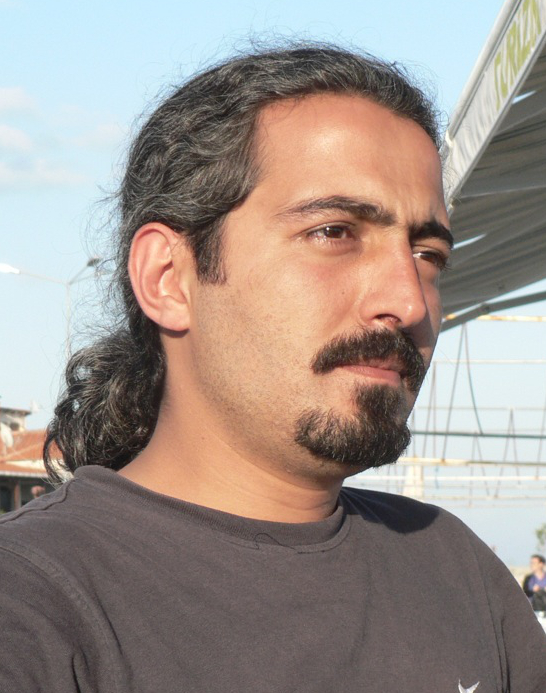Questions for Engin Yilmaz, Director of Doğa Derneği
 In your opinion, what are the principal threats facing the Gediz Delta today, and what would you recommend for their long-term mitigation?
In your opinion, what are the principal threats facing the Gediz Delta today, and what would you recommend for their long-term mitigation?
For several years, Turkey has been trailing far behind other countries in terms of nature conservation, and today is experiencing a major biodiversity crisis. Laws in this area and protection status have been continually weakened in this country, by amendments or direct interventions by government authorities. Due to current policies on water and urban development, several wetlands have either disappeared or their ecological integrity has been severely compromised.
The Gediz Delta is a priority wetland that faces important threats due to pressure caused by the development and urbanisation of its catchment area. People accept these changes, because they lack the knowledge to understand the broader implications of the development decisions made, as well as the potential negative impacts on their daily lives. In addition, due to the fact that nature conservation legislation has been significantly weakened in Turkey, legal solutions are not effective.
To mitigate threats in the delta, basic research must be continued to identify the conservation priorities, and promote real applications in the field. These research activities must also target (agri)cultural practices that are favourable to wetlands, and traditional income generating activities. Based on the results, an integrated and participative management approach can be developed and put in place. We must also increase awareness of local, national, and international conservation issues so that people understand what helps to maintain rich biodiversity in the Gediz Delta.
What do you think is the main interest of integrated management, particularly in a region like the Gediz Delta where biodiversity issues are closely linked to cultural and socio-economic questions?
The Gediz Delta is an important wetland for its natural heritage, but also for its cultural values and the services it provides to people living there. Its biological and cultural components are continuously interacting in response to social and economic changes, as well as in terms of ecological trends and conditions. That is why effective coordination between local sectors and stakeholders makes a real contribution to the development of integrated management.
How would you evaluate the cooperation between all the stakeholders working on this project, and do you believe this type of collaborative approach is important for a zone as complex as the Gediz Delta?
In spite of its complexity, the Gediz Delta is one of the rare examples in Turkey in which a collaborative approach can become effective quickly, due to the presence and will of non-governmental stakeholders. NGOs, universities, and local citizens are more inclined to participate in its management procedures, and have indeed all made contributions. Nonetheless, serious institutional and practical obstacles remain.a
What did Doğa Derneği contribute to this project, particularly in terms of its socio-cultural dimensions, and the links with local communities in the Delta and Izmir province?
Within the framework of this project, our principal contribution was in terms of awareness raising activities, education, advocacy, and our participation in legal proceedings. As the ecological integrity of the Delta is vital for local socio-cultural and economic sustainability, raising public awareness and mobilising public opinion about the importance of the Gediz Delta in terms of sustainable use are the most important tools that can force decision makers to address the threats. That explains why our overall approach included and gave more power to local stakeholders at every level of wetlands conservation from research to advocacy, legal actions, education, and awareness raising and information campaigns.
How did your collaboration with the Tour du Valat help you within the framework of this project; particularly, its several decades of experience on wetlands and biodiversity management in the Camargue Delta?
The Tour du Valat’s decades of experience in the Camargue and other parts of the world, has been very useful to us. In terms of capacity building, for us and for other stakeholders, the Tour du Valat has played a significant role in terms of scientific research, from the design phase to implementation. Their support has also been very useful in terms of analysing the results of this research in a way that enables us to identify conservation priorities, and also to transform them into communication targeting politicians to help us to convince them of the merits of an integrated management approach.
The first phase of the project will be over in 2015. In your opinion, what have been the main successes and obstacles up until now, and what will be the next steps?
As the lack and fragmentation of knowledge on the delta were major causes for the inadequate management of wetlands, the research conducted to improve it within the framework of an overall approach enabled more appropriate solutions to be identified. In terms of integrated management, most stakeholders are now favourable to a participative and collaborative approach, even if it cannot yet be applied because of national policies. During the project, important victories were also won against urban development projects, such as the project to rehabilitate the Izmir bay and port, which was going to destroy a significant part of the delta.
Do you think the results of the Gediz Delta project may be beneficial to other threatened wetlands in the Mediterranean region, and if yes, in what way(s)?
Most of the problems facing the Gediz Delta are not only found in this region, rather they are common in many wetlands around the world, as we can see in the Mediterranean Wetlands Observatory report. As it is a particularly complex site, the failures and successes in the delta have improved our knowledge for other wetland conservation practices. In particular, we now know more about how to work in countries in which the legal framework for nature conservation and the application of such laws is weak, whereas the negative pressure due to development policies is high.